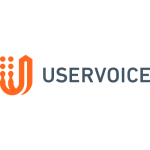About Heroku Connect
Heroku Connect is a data integration tool that uses bi-directional synchronization between Salesforce and Heroku Postgres to harmonize Postgres data your Salesforce information like contacts, accounts, and custom objects. Heroku connect includes a user-friendly, point-and-click interface so non-tech-savvy users can set up the service in minutes without coding or complicated configuration procedures.
About UserVoice
UserVoice offers product developers a single interface that collects and analyzes customer feedback from a variety of sources. This gives product makers clear, actionable insights into how to improve their offerings. UserVoice eliminates the need to send out surveys, log emails, and search through message boards when trying to understand customer experiences. When a customer reports a complaint or submits an enhancement request through UserVoice, the customer stays in the loop with updates on how their submission is being considered and resolved. This boosts customer engagement and willingness to provide feedback and ideas for product improvement in the future.
Popular Use Cases
Bring all your Heroku Connect data to Amazon Redshift
Load your Heroku Connect data to Google BigQuery
ETL all your Heroku Connect data to Snowflake
Move your Heroku Connect data to MySQL
Bring all your UserVoice data to Amazon Redshift
Load your UserVoice data to Google BigQuery
ETL all your UserVoice data to Snowflake
Move your UserVoice data to MySQL
Heroku Connect's End Points
Heroku Connect Synchronization of Apps Across Heroku and Salesforce
Heroku Connect allows you to build apps with open source stacks, natively integrate the apps with Postgres, and directly sync them with Salesforce. By integrating your Salesforce data with Heroku Postgres, it's easy to combine the power of the Lightning Platform with Heroku. Heroku Connect makes the process of building apps that bring your data and processes to your users as easy as coding in SQL.
Heroku Connect External Objects
Heroku Connect External Objects let you make your Heroku Postgres database information available inside your Salesforce deployment. This empowers you to synchronize your information across both platforms as you create, read, update, and delete data. By creating sophisticated applications inside Heroku and making the app data available to your Salesforce processes, you'll present a seamless experience in Salesforce, while all of your data stays inside Heroku Postgres. Moreover, configuring Heroku-Salesforce integrations for data pertaining to apps, sensors, customers, and products is a simple, point-and-click process that doesn't require any coding skills. Heroku External Objects combined with Salesforce Connect makes it easy to create a seamless experience across all of your business systems.
Heroku Connect Data Security Compliance
Heroku Shield Connect supports the development of applications that share sensitive data with Salesforce while complying with the strictest data security standards. Safely integrate CRM data, Protected Health Information (PHI), Personally Identifiable Information (PII), contact information, account data, and custom objects between Heroku apps and Salesforce. Heroku Shield Connect provides an easy pathway for building advanced applications that need to adhere to the most complicated data security regulations, including HIPAA compliance.
Heroku Connect Easy Application Development and Scaling
Through its compatibility with the most popular stacks and programming languages, Heroku Connect facilitates easy application development. Its add-on ecosystem includes your favorite development tools and databases (like New Relic, Mongo, and Redis) so you can use them with the applications you're creating. Through Heroku's proven infrastructure, which currently supports 26 billion daily transactions for massive consumer websites (such as Upworthy and Bonobo) virtually limitless scaling is available for high volume applications.
UserVoice's End Points
UserVoice Turnkey Install-less Feedback
UserVoice includes a custom-brandable, stand-alone web portal, where your customers can go to provide direct feedback. Users can type in their feedback while receiving auto-suggestions to match their feedback with existing user suggestions. This reduces the chance of feedback duplication and facilitates the surfacing of top ideas. If an issue or enhancement suggestion doesn't exist, users can add a new one. Then, other customers can upvote the suggestion to help you understand the requests to address with the highest priority.
UserVoice In-App Feedback Channel Integration
UserVoice offers cut-and-paste Javascript code that you can insert into your applications and webpages. This embeds a 'Give Feedback' button so users can provide immediate suggestions while they're using your product.
UserVoice Contributor Sidebar
The Contributor Sidebar is a UserVoice web browser extension that customer-facing teams can use to relay the feedback they capture while interacting with customers. Instead of needing to send an email or drop a post-it note off on a manager's desk, sales associates and customer-facing reps can submit feedback and ideas about enhancement requests and areas for product improvements into the UserVoice system. The Contributor Sidebar browser extension also allows sales teams to connect the feedback they send to an actual customer, who will receive email updates on the status of his or her enhancement request. The sidebar also keeps customer-facing teams in the loop on new developments and progress so they can communicate news to the customers they interact with.
UserVoice Metrics on Product Improvement Opportunities
UserVoice analyzes and groups incoming feedback into easy-to-understand product improvement suggestions, so development teams can understand the number of customers requesting the same improvements. Through visual metrics, graphs, and charts, UserVoice presents valuable information, such as the revenue represented by the customers making specific enhancement requests and how many users want those improvements. This empowers development teams to prioritize the most valuable improvement opportunities.








